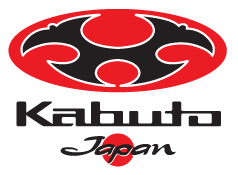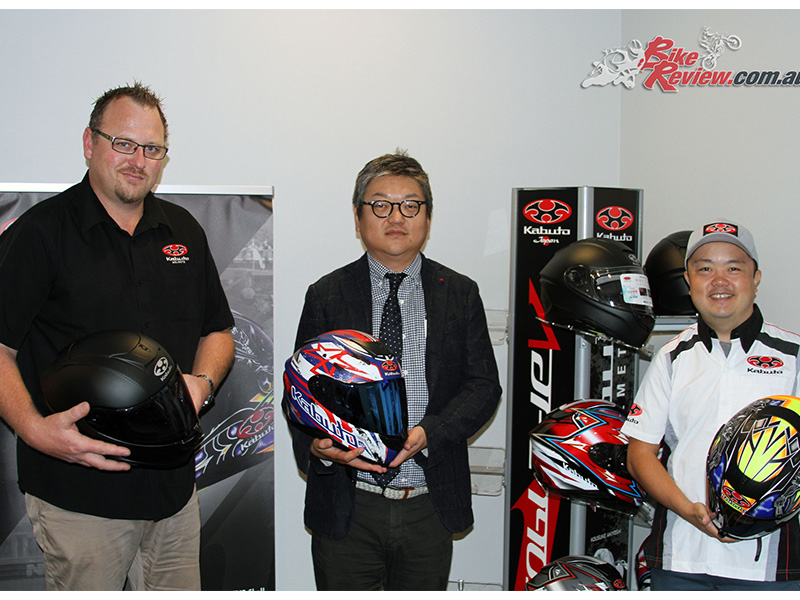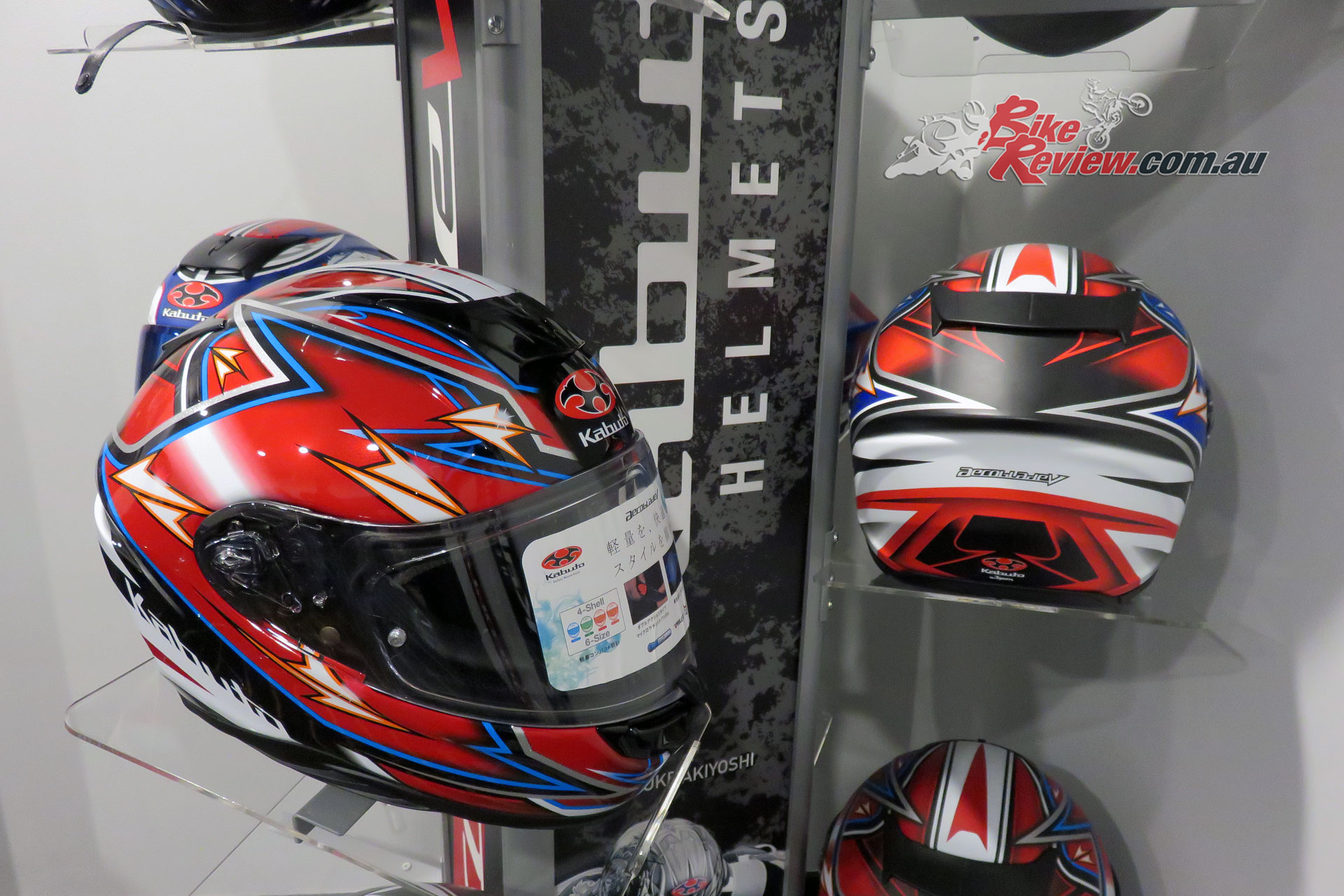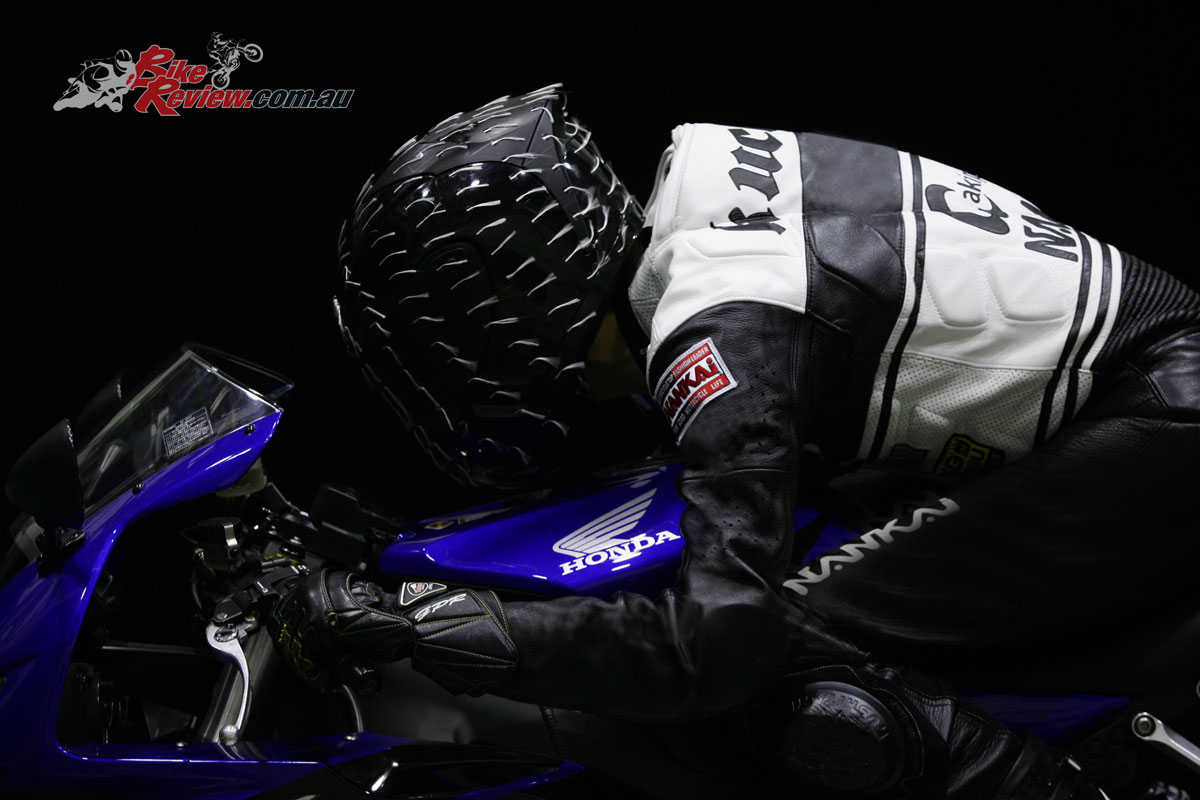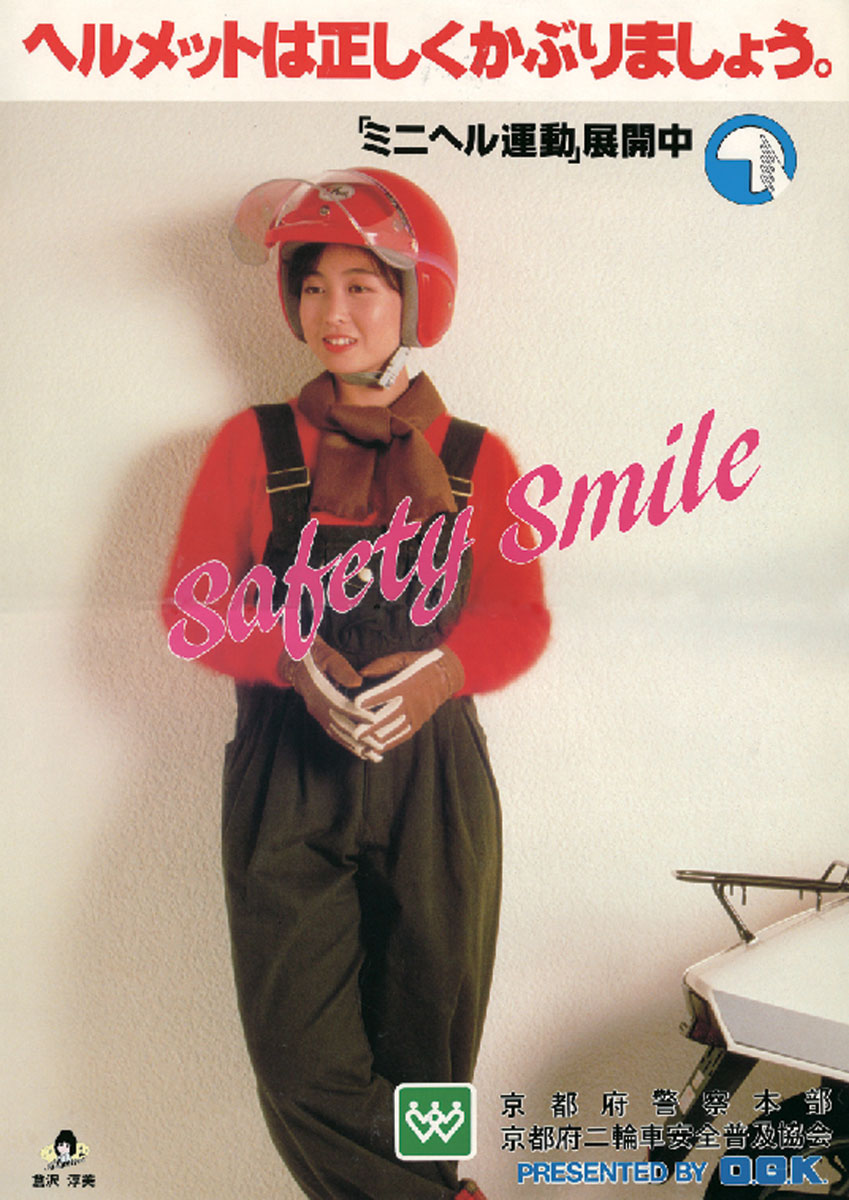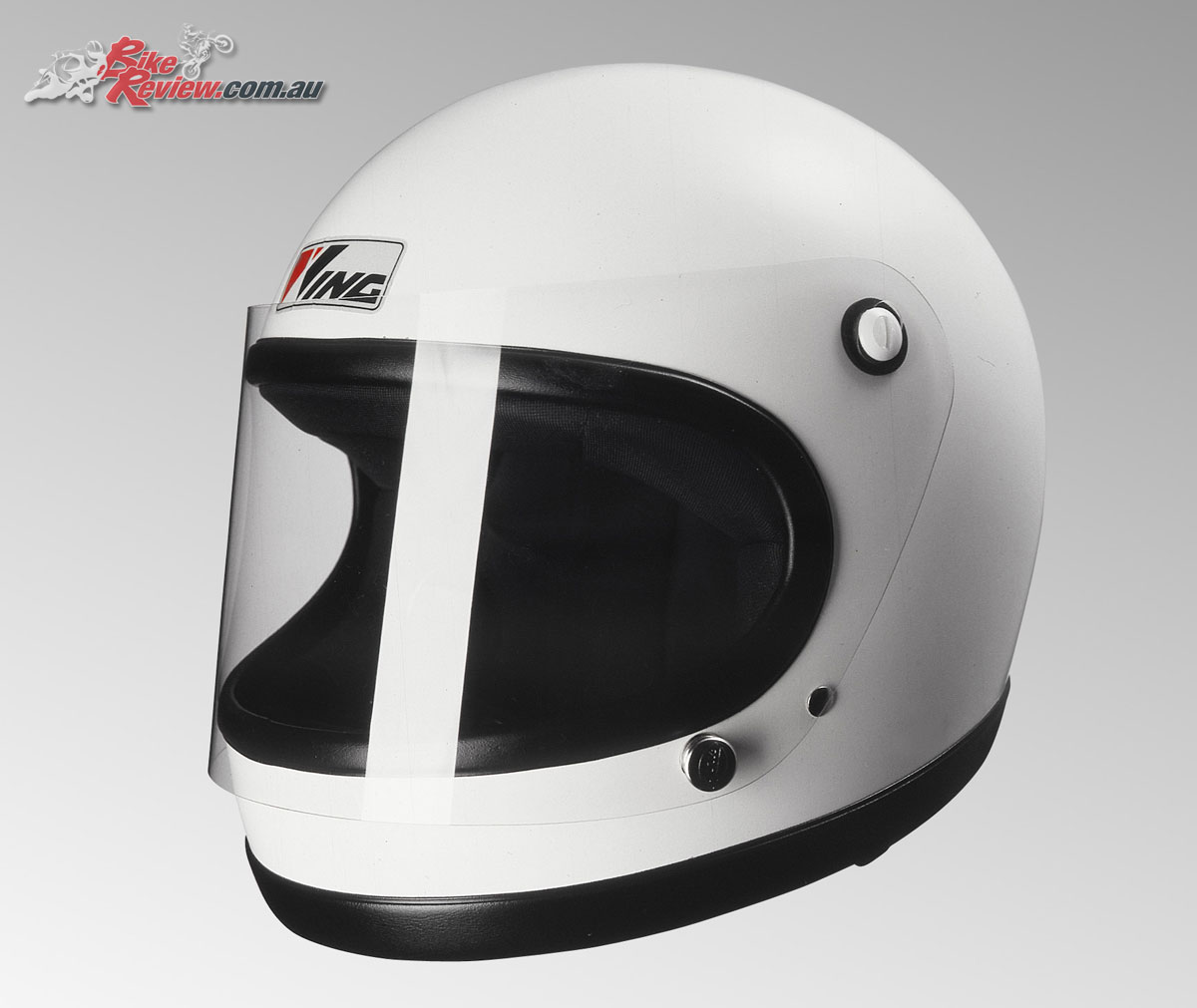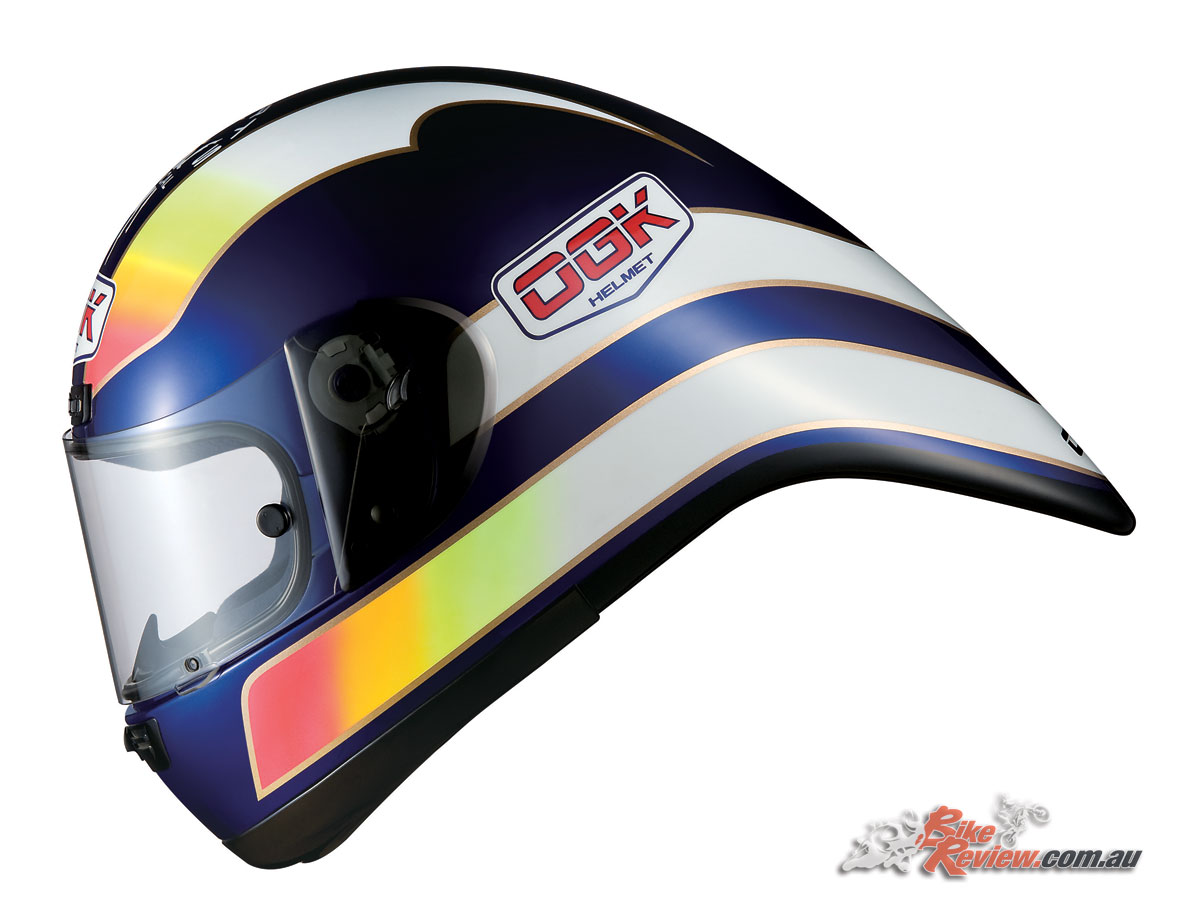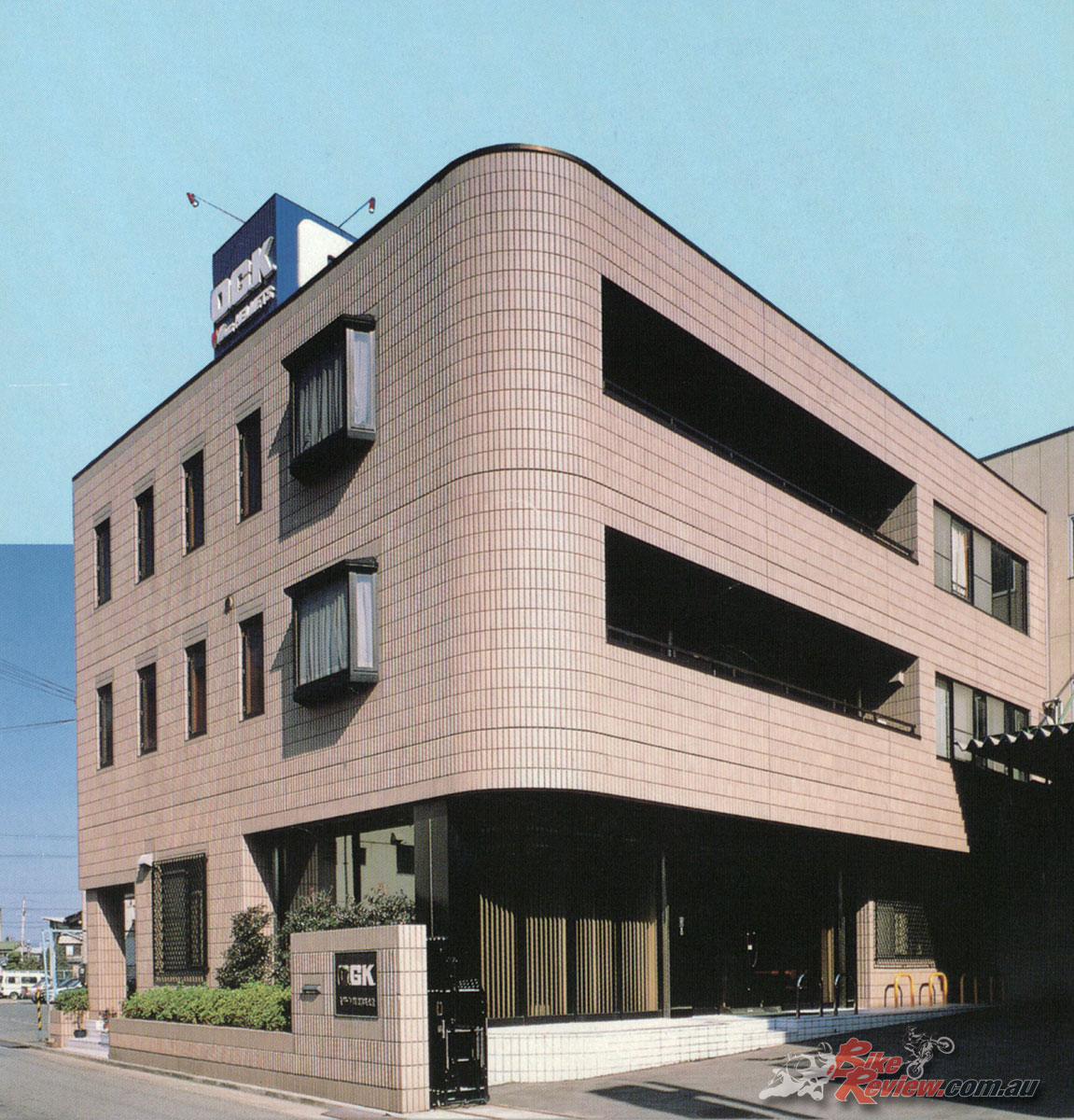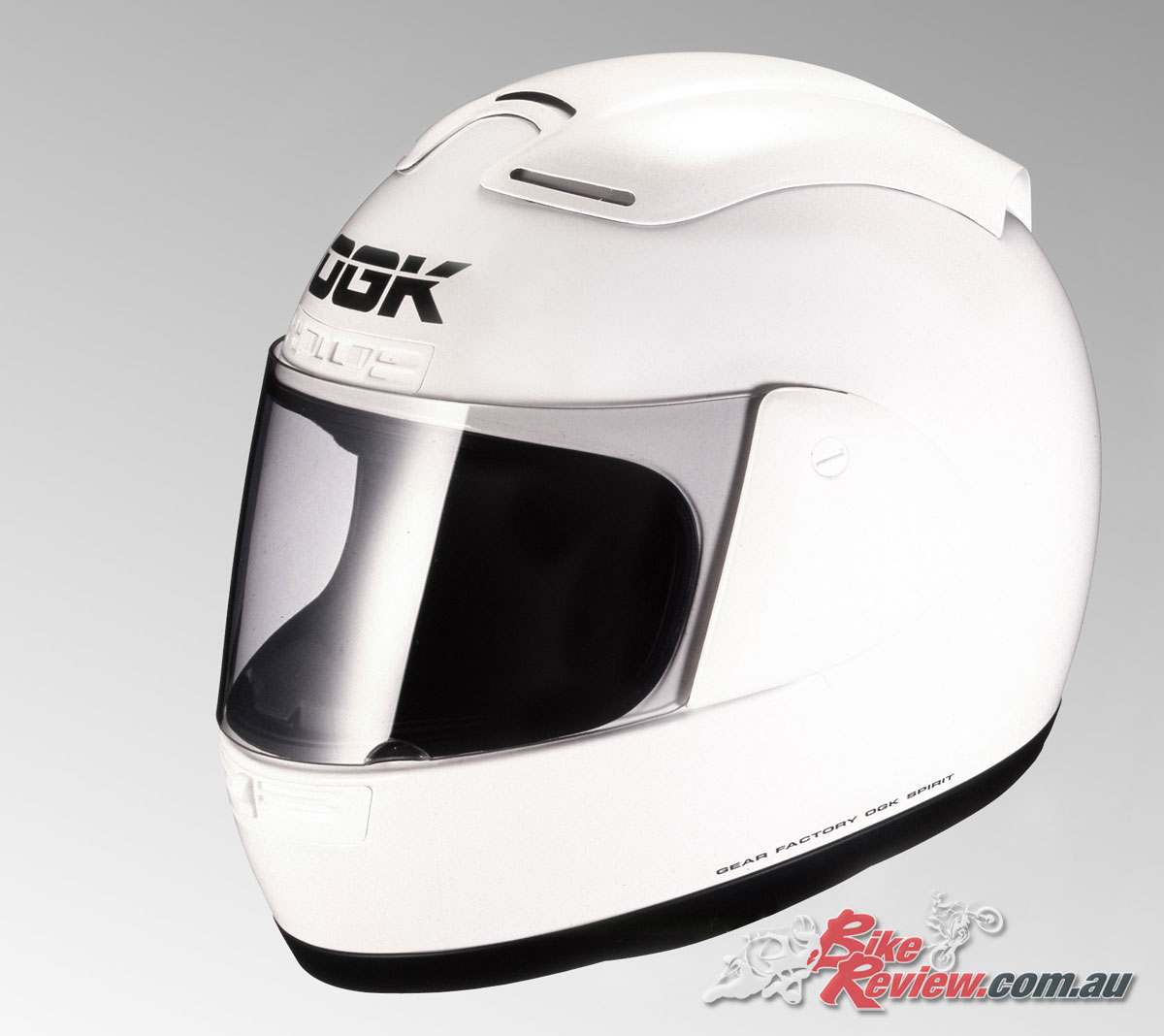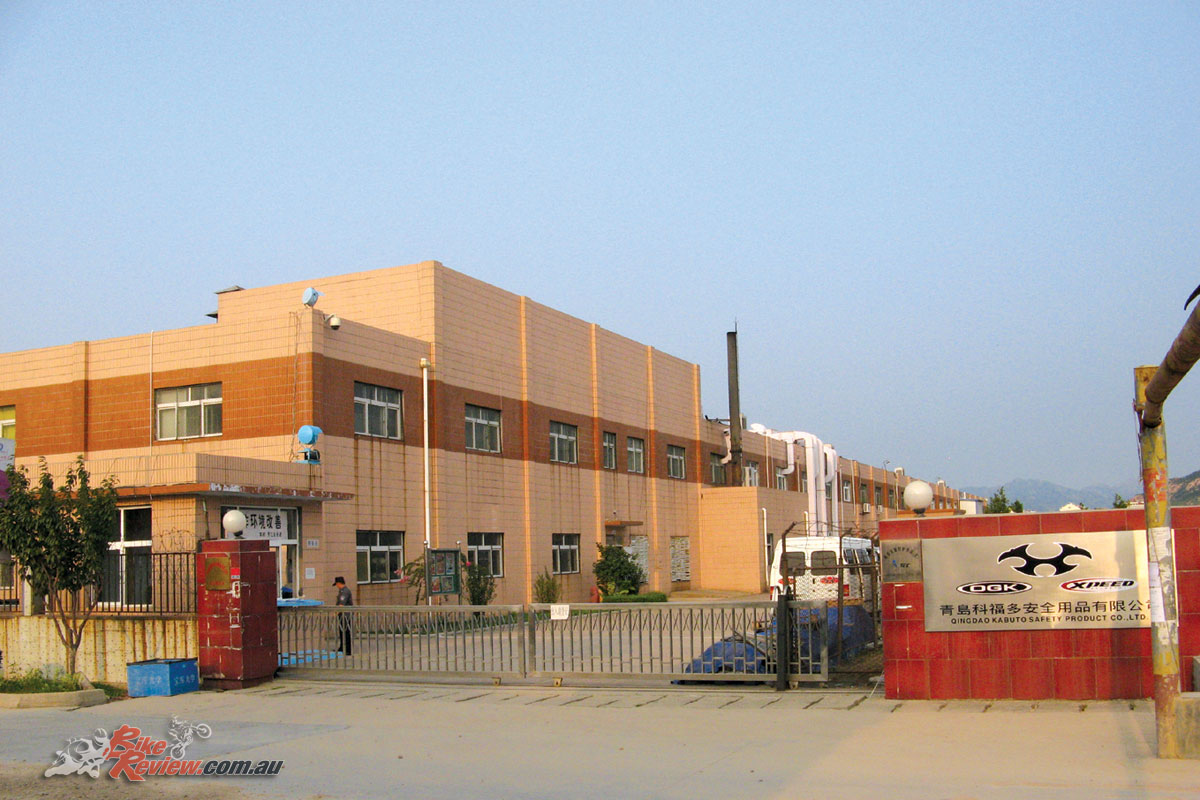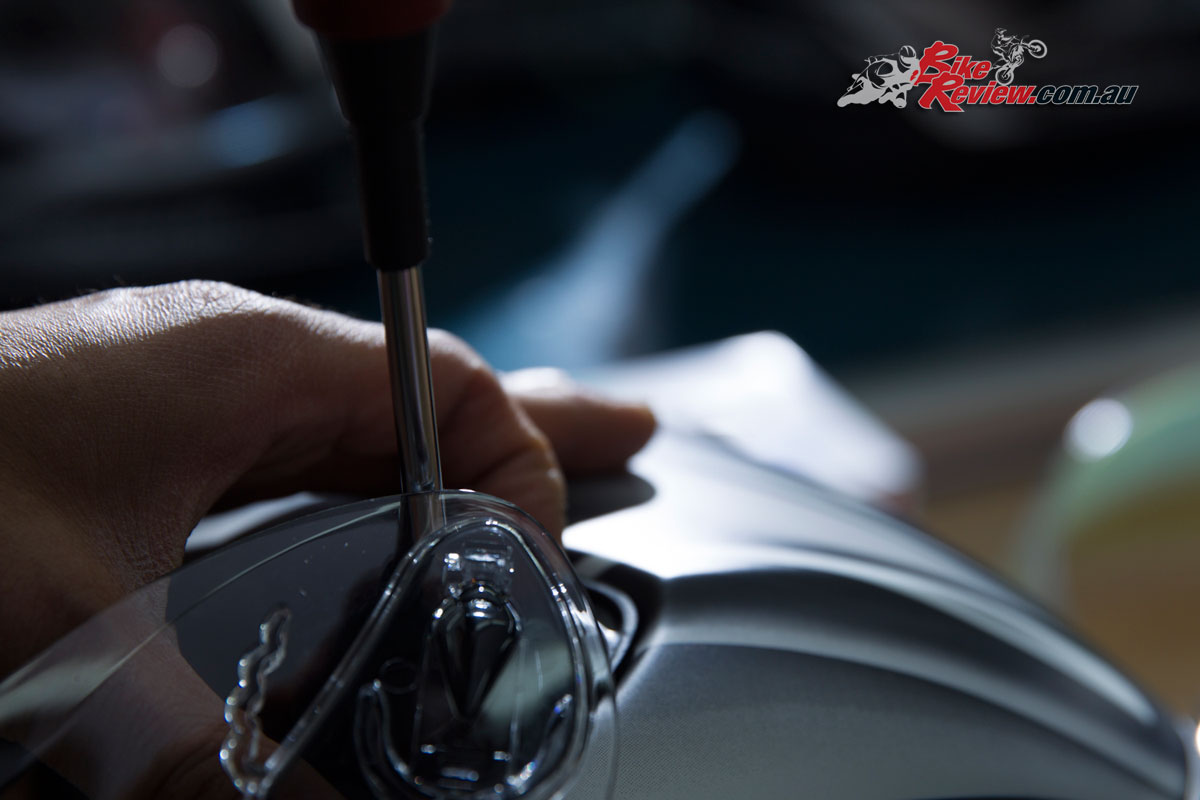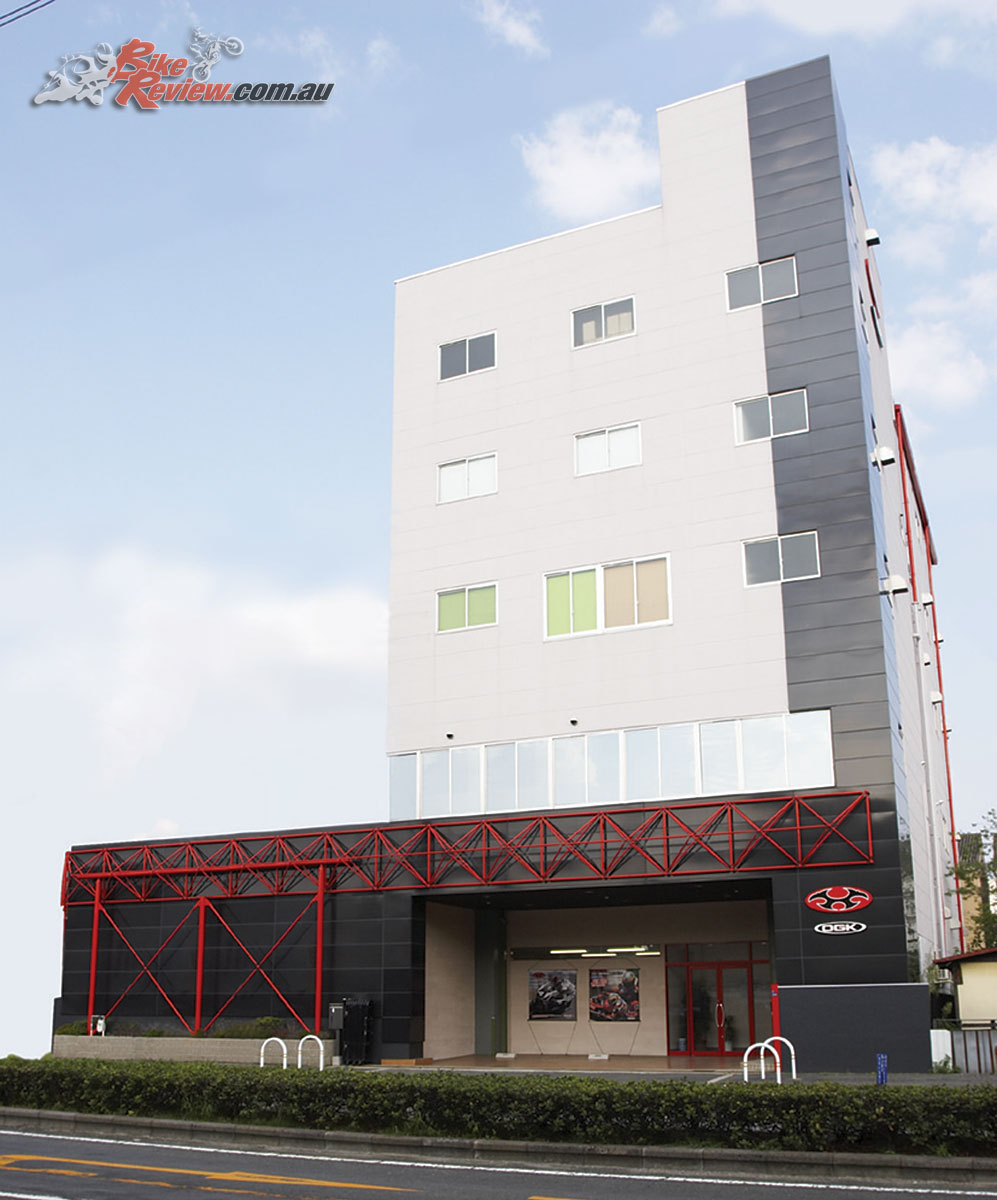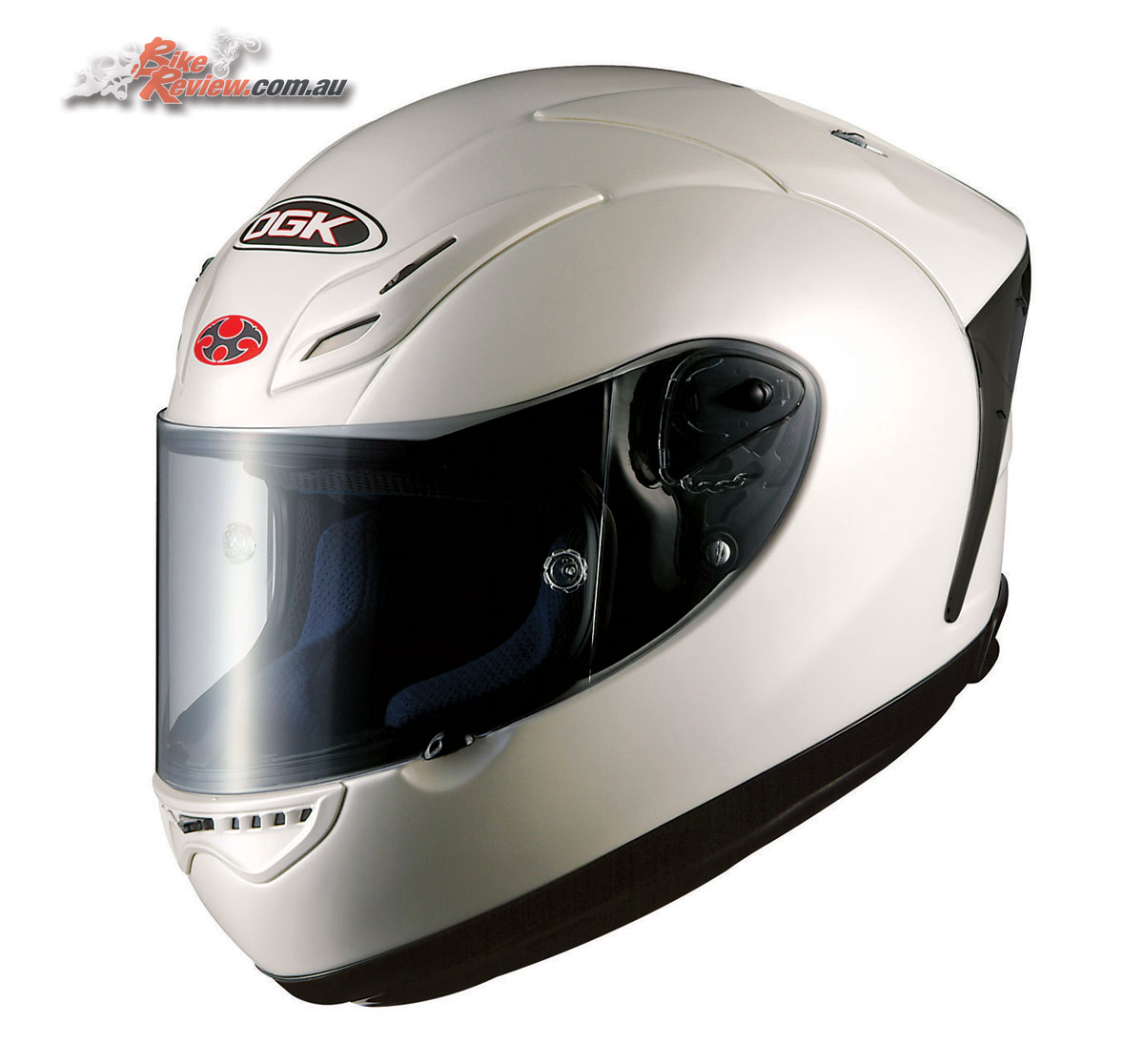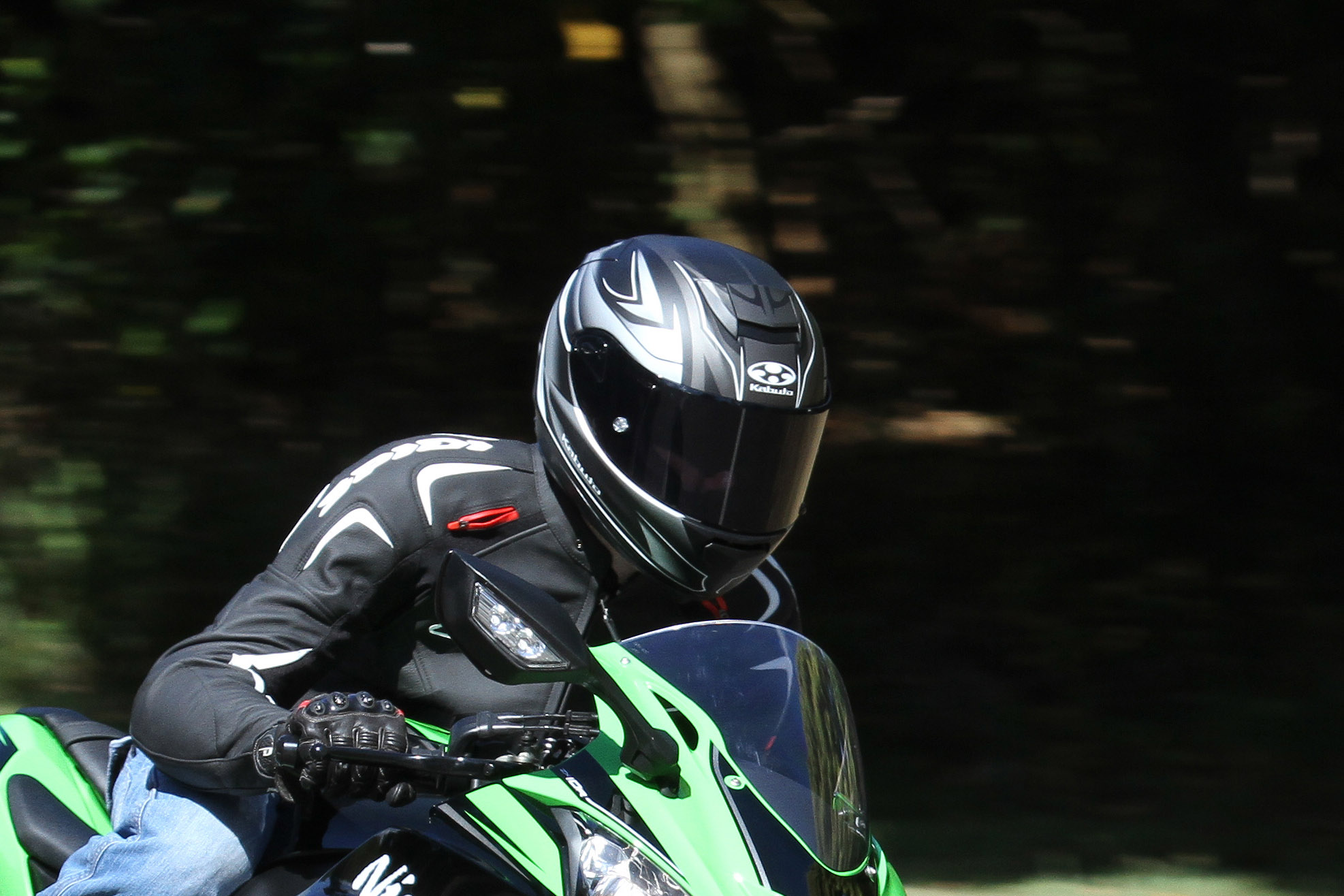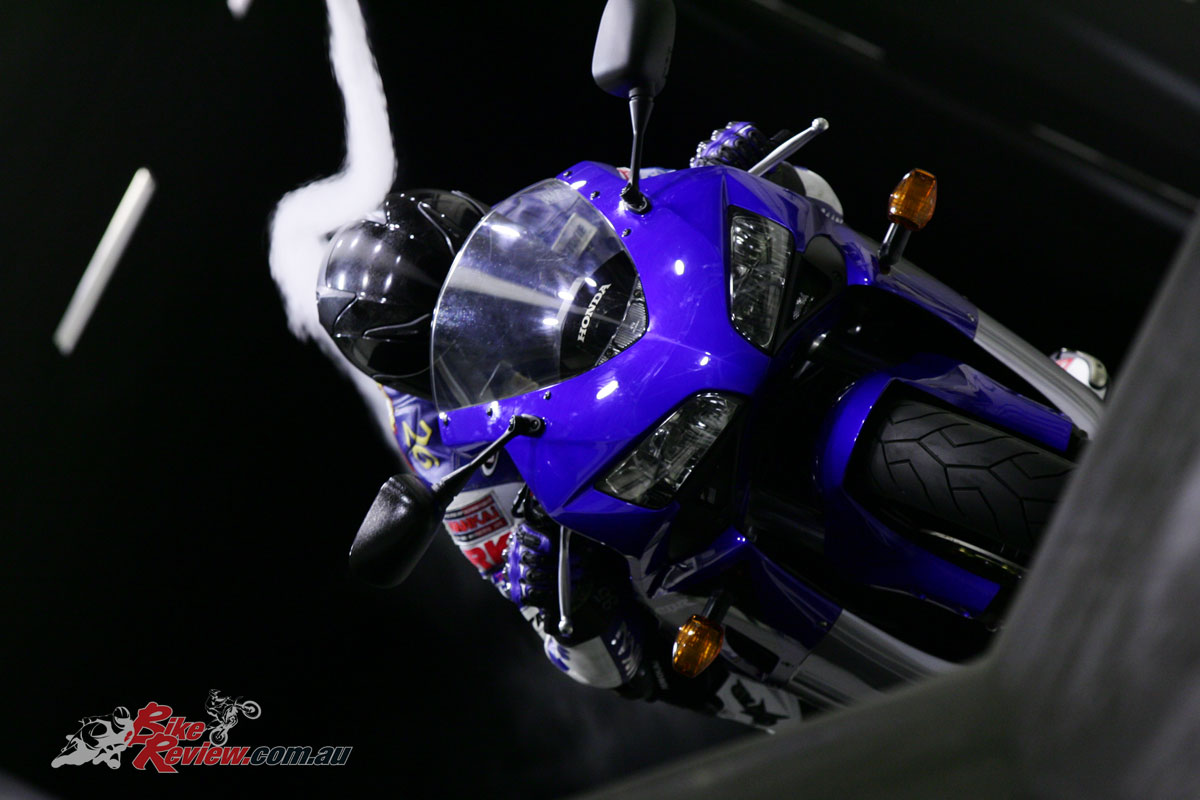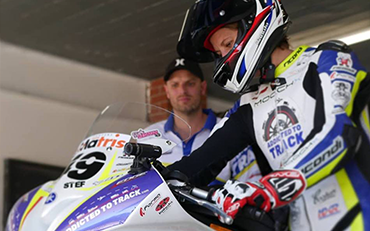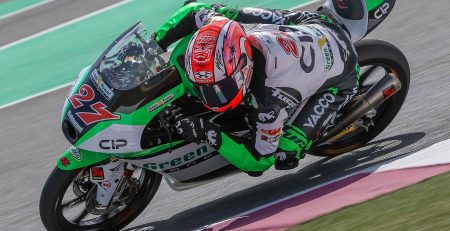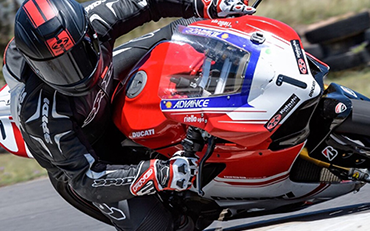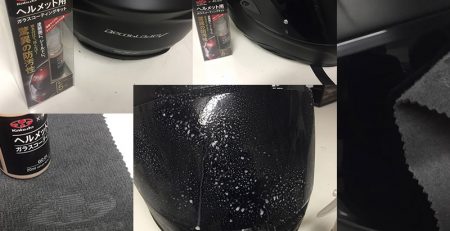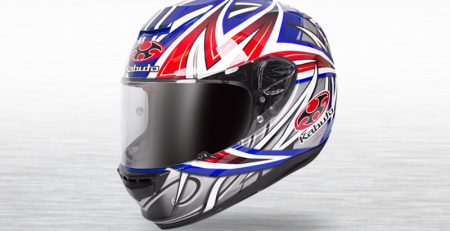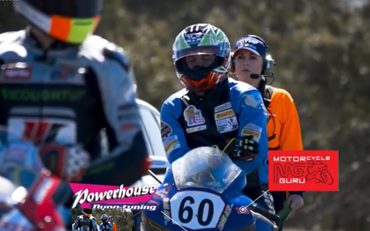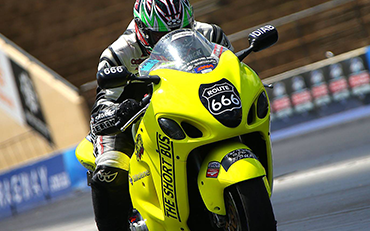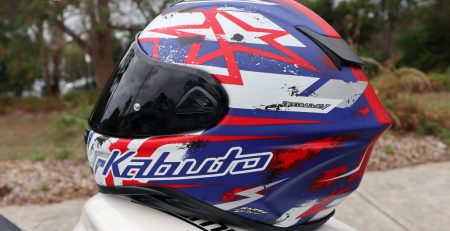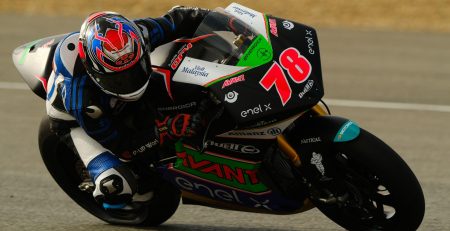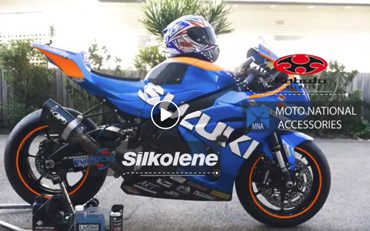THE HISTORY OF OGK KABUTO IS ONE OF FAMILY TRADITION, STYLE AND SAFETY
The history of OGK Kabuto is one of family tradition, style and safety… Words: Kris Hodgson Photography: Kris Hodgson, OGK Kabuto
Kabuto is a very interesting story, for those who like to know the history and background of the brands they support, with the brand relatively unknown
here in Australia until recently, despite having a long running history, which actually includes sponsoring Casey Stoner when he raced in the UK.
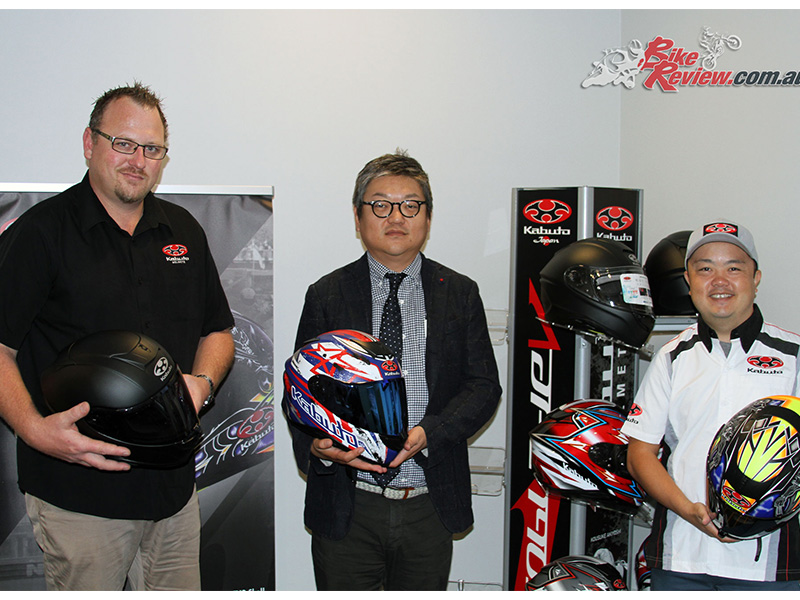 Left to Right: Moto National’s Chris Lynis, Kabuto Executive Director Hiroki Kimura and Overseas Operations Manager Ryohei Wada with the new Aeroblade-5 at the Sydney Launch
Left to Right: Moto National’s Chris Lynis, Kabuto Executive Director Hiroki Kimura and Overseas Operations Manager Ryohei Wada with the new Aeroblade-5 at the Sydney Launch
We recently attended the Sydney launch of the new Aeroblade-5 helmet, where we met Australian importer Moto National’s Chris Lynis, and also had the opportunity to talk to Kabuto’s Executive Director Hiroki Kimura and Ryohei Wada, Head of Overseas Operations for Kabuto.
You can check out our write-up of the new Kabuto Aeroblade-5 here.
With the release of the Aeroblade-5 we found out more about the history of Kabuto, and it’s an interesting story indeed.
As interesting as the Aeroblade-5 helmet itself was, actually learning about the history of this brand itself was quite the eye opener on its own, with Kabuto an integral part of the industry and much helmet development.
Many of the features we take for granted, especially us younger riders, are relatively recent additions, although older riders will no doubt be aware of times when such luxuries where not expected on every lid. Of course the steady improvement in helmet safety and features didn’t just happen, it was forged by companies, like Kabuto, who put time and money into R&D.
The Kabuto name actually stems from deep seated tradition in Japan, and is the term used to refer to combat helmets, such as those most often depicted as worn by Samurai, however the history of the term and armour stretches back to the fifth century BC, prior to the Samurai. Such is the impact and value of the term and the armour that adages exist refering to the kabuto.
It’s little wonder then that OGK chose such an iconic title for their helmet brand, which today is one of the top three helmet manufacturers in Japan. In fact they hold about a 30 per cent share in the premium motorcycle helmet market in Japan, as well as a very strong share of the low- to mid-range scooter helmets, and also the bicycle helmet market, which is massive in Japan, especially for school age children commuting to school via bicycle. It’s a strong indication of the brand’s dedication to safety that they are so prominent in protecting the younger generations in Japan.
This all started in 1948 when OGK (Osaka Grip MFG. Co., Ltd.) was established as a manufacturer of plastic and rubber accessories for bicycles. After 26 years of successful business, the company would start the development and sales of motorcycle and bicycle helmets in 1974 as a separate entity. The main focus of this business was the creation of bicycle helmets for the national market, primarily helmets for school children, as well as motorcycle helmets to export.
OGK were one of the first, if not the first, to pioneer the tear shaped helmet for bicycle racing. Pictured is the later RGX-Max, following on from the bicycle design, but for motorcycle drag racing
By 1982 OGK would create the ‘OGK Sales Co. Ltd’ company, who would focus on development of full face helmets, including the FF-1, as well as further bicycle helmet development. 1983 would see the development of the tear drop shaped motorcycle helmet, which is what we recognise as the norm in competitive speed/circuit based bicycle racing events, such as in the Olympics.
OGK are pretty sure this was this design’s first appearance,and in 1984 their helmet would be worn to a Bronze medal in the LA Olympics. 1986 would usher in the Mikuriya Head Office being opened, while 1991 would see the RS-1 helmet introduced.
Things start getting interesting in 1992 with the brand introducing the RS-1R, as the world’s first helmet featuring a top ventilation system. The following year they would improve upon this design by adding a shutter system, allowing a level of control over the top ventilation system.
The RS-1R was notable for featuring a top ventilation system, cutting edge technology back then, that we take for granted today
In 1994 the Nagata Factory started production, as did development of the RGX-MAX, which shared the tear drop theme of the earlier competition bicycle helmet, but was designed for high speed drag racing.
1995 would see the RX-R helmet introduced, featuring a top ventilation and shutter system, as well as a quick release shield system. In 1997 the company opened up their Chinese factory in Qingdao, which is managed by a Japanese management team, and where they have made a significant investment in ensuring that not only are their staff trained to meet their high standards required, but also that those staff and their expertise is retained.
In Qingdao, Kabuto invested not only in the premise, but a workforce they have retained to today, ensuring their expertise is retained
Ryohei-san actually explained that the same people are running that factory today, as were first brought in, while the factory produces 99 per cent of its products purely for OGK. This prevents the common issue of knock-offs appearing as discounted prices on marketplace type seller websites, or all their expertise and R&D being illegally used by another party. This makes the Kabuto factory in China one of the most expensive in the country due to labour costs.
Kabuto are also proud of having a highly trustworthy workforce, which allows helmets to be assembled by hand to the highest standards
He was particularly proud to point out that they don’t use automated machine run production, instead relying on a highly skilled and efficient workforce, who ensure a top notch product every time.
1998 would see another industry first introduced by OGK, this time on their Ragles helmet, which sported the first ever rear aero-fin, as well as the previously featured quick-release shield system.
The Ragles was another notable offering, being the first to feature a rear aero-fin, greatly increasing aerodynamics
2000 saw the FF-3 helmet introduced, which features the top ventilation system and the rear aero-fin all built into a single piece, while also becoming the first FRP (Fibre-Reinforced Plastic) model, a OGK patent.
2003 would see the FF-4 and Aeroblade-2 models introduced, both featuring FRP construction, while 2004 would see the FF-M ‘motocross’ style helmet introduced. 2005 would then usher in the FF-4R, which featured a carbon-fibre shell.
In 2006 the company’s name was changed to OGK Kabuto, which is where many are more likely to start recognising the brand, while the Nagata Head Office was also opened, as was the Kizuri Factory. The same year also saw the brand’s first Suzuka 8 Hour Endurance win with Tsujimura of the FCC-Honda team taking the accolades.
2007 was another good year with Kabuto introducing the FF-5 helmet, featuring another new development, this time the first wake stabiliser in the world, a Kabuto patent. It was also the year in which Kabuto took its second Suzuka 8 Hour Endurance win, this time with Akiyoshi on the Yoshimura-Suzuki.
2008 would see Kabuto get ISO9001 certification for their range, while in 2010 their FF-5V would be Snell 2010 certified.
Ryohei-san and Chris Lynis also pointed out here, that one of the strengths of the Kabuto helmets range was the fact they have provided an option with widely accepted certification standards, meaning they could be taken around the world by racers, without running into any regional issues, due to differing local standards.
The Aeroblade-3 proved a huge success for Kabuto, while their helmets were a popular racers choice, offering a wide range of safety certification, allowing them to be used almost anywhere
By 2011 the brand would establish Kabuto Europe in The Netherlands with an eye to increasing their reach on the European continent, with the Aeroblade-3 arriving in 2012 and proving a huge International success.
The RT-33 appeared later, in 2014, and remains in the Kabuto product line this year, and we’ve had numerous contributors test the helmet and be highly impressed. You can find the reviews here: Kabuto RT-33 Helmet.
The Kabuto RT-33 was launched in 2014, and has received positive reviews from a number of BikeReview.com.au contributors, on the road, track and drag strip…
As you’ll see from the various patents Kabuto OGK (now just Kabuto) held and their development and introduction of new features, they have shaped the offerings we receive today, and that same passion for constantly improving and developing their products continues.
Kabuto are actually partnered with Tokyo University in Japan, where they undertake their wind tunnel testing, as well as CFD (Computational Fluid Dynamics), allowing them to develop class leading features and products.
The Kabuto Aeroblade-5 is the culimination of a huge history of R&D and expertise, and Kabuto aimed to drastically improve on the Aeroblade-3 in every way they could
One point of interest to us, was also hearing about the sharing of these new developments within the Japanese helmet manufacturing industry, with Ryohei-san explaining that at the time of introducing many of these features, Kabuto was actually approached by some of their competition in Japan at times, with all being family run businesses at the time.
They were asked if these new features could be used, and as it was an honour to be approached in this fashion, they agreed. He was quick to mention that while these probably weren’t the most commercial decisions, that it really was a great honour.
This mentality is further reflected in the Aeroblade-5, with five main factors considered with helmet development – light, safe, aerodynamic, compact and quiet. The Aeroblade-5 features a new centre visor lock, departing from the norm for a better seal, while the new helmet offers increased shell size options, helping ensure minimal weight for the varying sizes, as well as a more tailored fit.
With development also taking feedback from racers and road riders alike, Kabuto ensure that their product is both extremely good, but also very competitive, which is great news for riders who want the best, but may not have $1000 to drop on a lid.
The Kabuto Aeroblade-5 is now available in stores in a variety of graphic options and Matte Black, with the Graphics $479.95 RRP and the Matt Black $429.95 RRP. For more information see MotoNational.com.au or Kabuto.com.au
